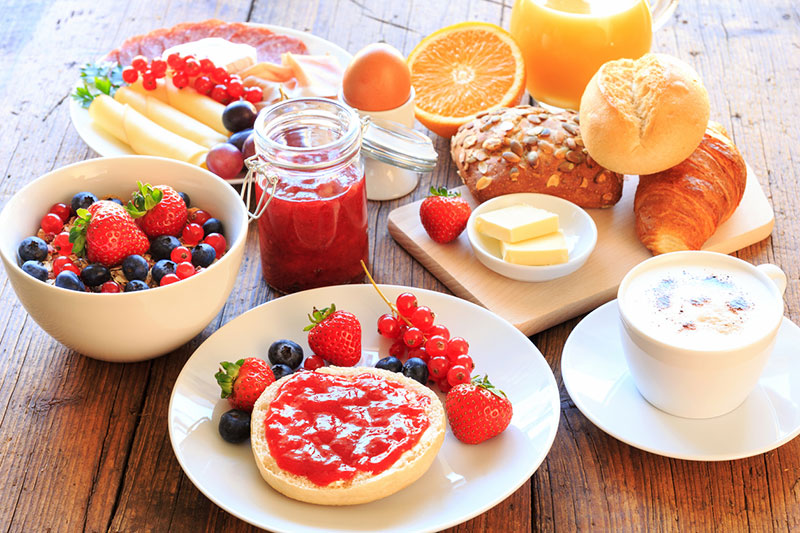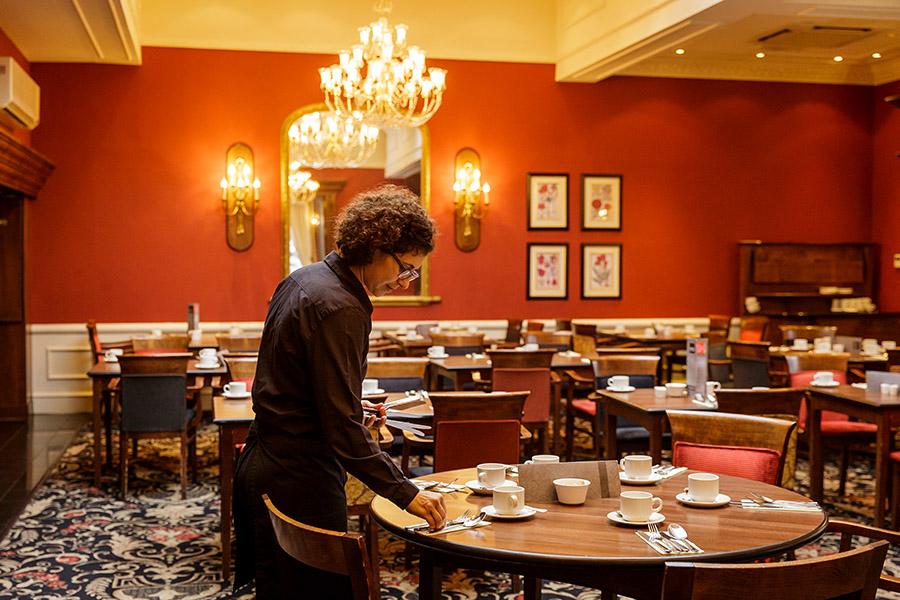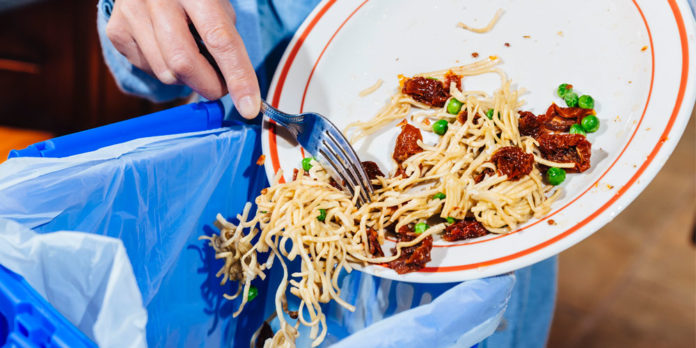Food waste has become a cause célèbre, with more light being shone on the subject than ever. Simple measures across the supply chain can help to reduce food waste, increase margins and improve profits.
Fifteen months ago, the Meikle restaurant at Crieff Hydro, Perthshire, was wasting 70 loaves of bread each week. Today, that number is seven. Staff at the 19th Century spa hotel, familiar to attendees of the annual Scottish Wholesale Association conference, participated in an eight-week waste-monitoring trial that was part of the hotel’s ongoing efforts to become leaner and greener.
“When we did the audit, we were taken aback at how much toast and jam we were wasting. By capturing all the leftovers, we discovered that around £7,000 was being thrown away each year,” says Alexandra MacDonald, the hotel’s support services and environmental manager.
She calls it the “toast and jam challenge”. To tackle the problem, executive chef Bruce Price reduced the breakfast serving from three to two slices per person – a move that halved the wastage.
The toast and jam challenge
The real results followed when a toaster was installed on the buffet bar, leaving guests in control of their portion size. The sliced bread was also replaced by a smaller bloomer and the jam pots swapped for scaled-down containers. “These sound like small changes, but by focusing on one area and showing how wastage relates to cost, we could pinpoint where to take action,” explains MacDonald.
Since the pilot, Crieff Hydro has made impressive annual savings of almost £52k, a figure MacDonald says jumps to £75k when waste disposal, labour and procurement costs are taken into account. The automatic smart-metering system used during the trial has since been replaced by more cost-efficient kitchen scales, and staff now spend an extra two minutes weighing waste items and manually
recording the figures.
It is not just toast and jam where reductions have been made either. By shrinking the containers in which breakfast items are served, chefs have kept everything looking plentiful while minimising end waste. Plate sizes have also been reduced, with an invitation to guests to top-up.
“We noticed that if guests had a larger plate they did not eat everything, whereas if they filled a smaller plate, it was usually enough,” says MacDonald, adding that increased awareness at management level, alongside better communication between kitchen and front of house staff, particularly about numbers of diners, helped the process.
Crieff Hydro’s ongoing commitment to cutting food waste started when the hotel signed up to the Hospitality and Food Service Agreement (HaFSA), a voluntary pledge initiated by waste reduction charity WRAP and administered by four UK governments. WRAP estimates that food waste still costs the hospitality industry £2.5bn a year and in 2015, it announced a voluntary waste reduction commitment that feeds into Courtauld 2025. This covers the grocery and foodservice channels and aims to achieve a 20% cut in food and drink waste in the UK over 10 years.
WRAP’s food and drink specialist Peter Worsey, explains: “It is about how products are designed and sourced more sustainably, how products move through the supply chain more efficiently, how products are consumed with less waste, and how to get more value from waste and the surplus that is generated.”
Wholesalers that have signed up to the commitment include Bidvest Foodservice, Castell Howell Foods and Compass Group, while suppliers include Premier Foods, Apetito, Burton’s Biscuits and Nestlé.

Portion size standardisation
WRAP calculates that 45% of food wastage happens during food preparation, with a further 21% coming from spoilage. But it is the remaining 34% that is arguably the more interesting figure – the food left on diners’ plates.
In a survey of 5,000 people carried out by WRAP, the main reason cited for this was that portions are too big. Some added that there was a lack of portion choice – for example, small, medium or large – and many said they felt embarrassed asking for a doggie bag or that restaurants did not make it explicit this was an option.
While tackling food waste during preparation can be achieved by small but meaningful actions, as in Crieff Hydro’s case, tackling waste at the consumption end is more complicated. However, there are a growing number of voices demanding change, with organisations such as the British Heart Foundation (BHF) leading the call for the creation of an industry standard – not only to tackle waste but to encourage healthier living. There is no legislation in the UK or EU relating to requirements in food portion size.
“The current guidance to industry on average portion sizes for products was last updated in 1993 and is now significantly out of date,” says Rachel Sacks, research communications officer at the BHF.
While the charity recognises that there is no silver bullet in fighting obesity, it does advocate practical steps that suppliers, wholesalers and foodservice operators can take to tackle the amount customers are eating.
“Reformulation of products as well as responsible promotions on food, especially for children, are just two of the things that could be done. Portion-controlled packaging can also be useful in increasing consumers’ awareness of an appropriate portion size, as well as smaller portions being helpful in driving down consumption of saturated fat, salt and sugar,” adds Sacks.

Catching better margins
Also adding its voice to the drive is wholesaler JJ Food Service, which last year ran the 10oz Challenge to encourage fish and chip shops to add smaller chip portions to menus, which equate to better margins. “If the average portion of regular or small chips weighs in at 16oz (450g) and is priced at £1.80, an extra small portion that is 10oz (280g) can be fairly priced at £1.30. Less chips, less waste and more margin – everyone’s a winner,” JJ’sgroup general manager Terry Larkin says.
The initiative followed research from the Agriculture and Horticulture Development Board (AHDB) and industry expert Seafish that found a huge disparity in portion sizes at 600 fish and chip shops in the UK. A medium portion of cod varies from 93g to 562g and a medium portion of chips varies from 100g to 797g, while the average price of fish and chips only varies by 34% region by region. Seafish and AHDB recommend medium or regular portions of fish and chips should be between 170g and 284g.
Rob Clayton, of the AHDB, says: “A key finding of the research is that one in three people said a greater range of portion sizes would encourage them to eat fish and chips more often. Couple this with the fact that 45% of people would order smaller portions to cut their calorie intake, and there is a huge opportunity for outlets to encourage health-conscious consumers through their doors.”
Tom Pickerell, technical director at Seafish, says standard portion sizes would have two main benefits: “Consumers will know what to expect when ordering their selected portion size, wherever they are in the UK, and shops can open themselves up to increased business from lunchtime trade and by upselling single smaller portions, rather than a large shared portion.”











